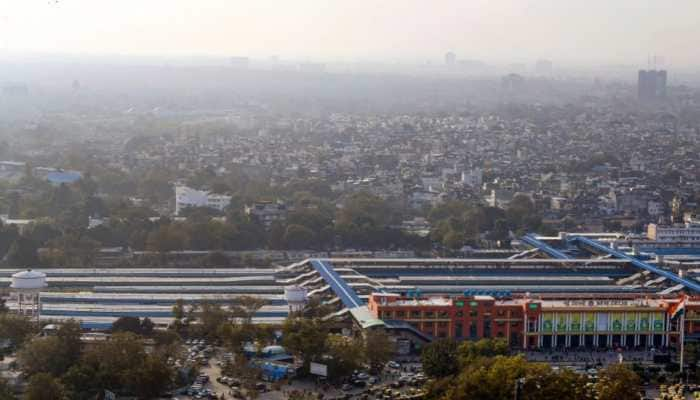Demonetisation: Cash purge gives welcome boost to Indian banks
India's demonetisation drive is likely to cause short-term pain for the economy, but banks are expected to benefit from the move in the long run.
Trending Photos
)
Singapore: India's demonetisation drive is likely to cause short-term pain for the economy, but banks are expected to benefit from the move in the long run.
Indian banks are enjoying a rush of new liquidity as people line up to deposit 500 rupee and 1,000 rupee notes, which ceased to be legal tender under a surprise government crackdown on Nov 8.
There have been new bank deposits, totalling 4 trillion rupees (S$83 billion), as of Nov 17, according to a treasurer at a public sector bank. The government expects the deposits to reach 10 trillion-12 trillion rupees, out of an estimated 17 trillion rupees in undeclared black money in circulation.
"In five to six days, we have collected 400 billion rupees in deposits, which (normally) takes nearly a year to collect," said Usha Ananthasubramanian, managing director of Punjab National Bank.
The wave of liquidity is lowering the banks' cost of funds, with borrowers likely to benefit.
"We may decide to reduce lending rates at the beginning of December since cost of deposits will come down and inflation numbers are soft," said Rakesh Sharma, managing director of state-owned Canara Bank.
On the other hand, India's largest public-sector lender, State Bank of India, has cut one-year deposit rates by 15bp to 6.9 per cent.
Consumer price inflation eased to 4.2 per cent in October from a peak of 6.1 per cent in July.
Higher bank interest income from a growth in lending will boost capital buffers.
"Core capital should also ideally improve on the back of better internal income generation through earnings and treasury gains in a medium- to long-term context," said Saswata Guha, director at Fitch Ratings.
BOND RALLY
For now, credit growth remained weak and public-sector banks had parked 180 billion rupees in 10-year government bonds, said a bank treasurer. India's government benchmark has outperformed Asian peers as a result, in contrast to the sharp rise in yields, attributable to the US presidential election, in other emerging markets. The yield on the 10-year G-sec had shrunk from 6.836 percent on Nov 7 to 6.42 percent last Thursday.
"No one is coming to take loans, excess liquidity has to go somewhere to create assets by investing in G-sec," said the bank treasurer.
The Reserve Bank of India conducted reverse open-market operations of 1.5 trillion rupees on Wednesday to flush out excess liquidity, he said.
Eventually, the capital position of public-sector banks could benefit from an improvement in public finances linked to the crackdown on black money. Assuming evaders deposit 40 per cent of the 17 trillion rupees in unaccounted funds, the government would collect 4 trillion rupees in tax, equivalent to 3 per cent of GDP, according to Ambit Capital. Some of that money could be deployed to improve the capitalisation of ailing public-sector banks.
Funds that have been parked in government bonds could later on flow into offerings of Additional Tier 1 capital. For instance, Canara Bank and Bank of Baroda have revived plans for AT1 offerings on the decline in bond yields, according to a DCM banker.
"We did not go for raising AT1 because of volatility on account of the US elections. Rates are favourable now and we are in talks," said Mr Sharma of Canara Bank.
"We are waiting for the right opportunity."
The two banks have board approval to raise 25 billion rupees and 20 billion rupees, respectively, from AT1 offerings.
Not everyone, however, is convinced that easier credit conditions will automatically translate into demand for AT1 bonds.
"A falling interest-rate scenario is obviously beneficial from an issuer's perspective, but to what extent there will be a corresponding investor demand for loss-absorbing instruments in a falling interest scenario remains to be seen," said Fitch's Mr Guha.
In the near term, the jury is still out on the effect of the demonetisation drive on the economy. Growth is expected to take a hit as a result of the disruption in day-to-day activity and the loss of purchasing power from lost black money. This could add further pressure on the already stressed asset quality of banks.
The pain will be felt mainly by state-owned banks, which have a large exposure to small and medium-sized companies reliant on cash transactions, some of which have ground to a halt on the demonetisation.
Most bankers say it is still too early to comment on the long-term earnings improvement. It depends on how much money remains in the system once withdrawal controls are lifted. Currently, customers cannot withdraw more than 24,000 rupees per week, while new banknotes are introduced.
Stay informed on all the latest news, real-time breaking news updates, and follow all the important headlines in india news and world News on Zee News.
Live Tv







)
)
)
)
)
)
)
)
)
)
